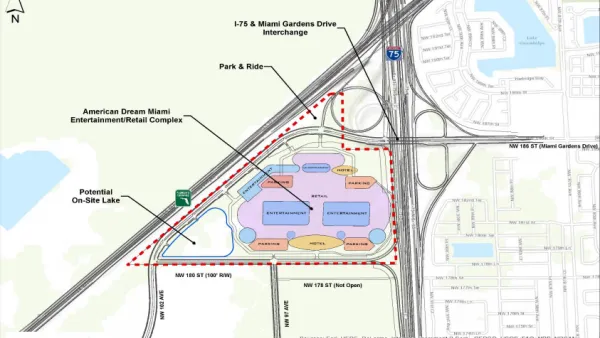Asia's mega-malls have been booming for over a decade, many built atop former park space, and now are suffering from high vacancy rates and low consumer spending.
"In modern economics, a developing country’s middle class is defined by its ability to consume at levels at or near those of the US, Japan, or Europe. Asia’s new malls are bubbles of modernity, built on vast scales as symbols of this growing class. They are meeting spaces, glossy, air-conditioned indoor parks, where you can ignore the air pollution, poverty, and heat of the real world," explains Nithin Coca.
"These malls have been built on what were once parks. As recently as 1983, the city still had 35% of its land in open, green areas. Today, according to Green Map Jakarta, that number has dropped to an astounding 6%, one of the lowest in the world. "
"When Jakartans go for a walk, they have few options beside the malls. Sidewalks are non-existent, overtaken by motorcycles or vendors, the parks are gone, and getting in and out of the city to the countryside a nightmare. As the urban heat effect and lack of trees make Jakarta both hotter and drier, the malls become a refuge of air-conditioning (from reliable, generator-sourced electricity) for a population increasingly more accustomed to living in a climate-controlled world."
Coca describes the macroeconomic takeaway of Asia's faltering mall boom this way: "The reality that malls and consumerism only cater to a small percentage of the population is becoming more and more apparent. Remember—Asia’s economic growth was built on manufacturing and natural resources. It’s the transition to an American-style consumer economy that is faltering, perhaps because that mode—built in an era of cheap oil and plentiful space—is untenable in today’s world."
FULL STORY: Asia’s mega-mall boom is headed toward bust

National Parks Layoffs Will Cause Communities to Lose Billions
Thousands of essential park workers were laid off this week, just before the busy spring break season.

Retro-silient?: America’s First “Eco-burb,” The Woodlands Turns 50
A master-planned community north of Houston offers lessons on green infrastructure and resilient design, but falls short of its founder’s lofty affordability and walkability goals.

Delivering for America Plan Will Downgrade Mail Service in at Least 49.5 Percent of Zip Codes
Republican and Democrat lawmakers criticize the plan for its disproportionate negative impact on rural communities.

Test News Post 1
This is a summary

Test News Headline 46
Test for the image on the front page.

Balancing Bombs and Butterflies: How the National Guard Protects a Rare Species
The National Guard at Fort Indiantown Gap uses GIS technology and land management strategies to balance military training with conservation efforts, ensuring the survival of the rare eastern regal fritillary butterfly.
Urban Design for Planners 1: Software Tools
This six-course series explores essential urban design concepts using open source software and equips planners with the tools they need to participate fully in the urban design process.
Planning for Universal Design
Learn the tools for implementing Universal Design in planning regulations.
EMC Planning Group, Inc.
Planetizen
Planetizen
Mpact (formerly Rail~Volution)
Great Falls Development Authority, Inc.
HUDs Office of Policy Development and Research
NYU Wagner Graduate School of Public Service



























